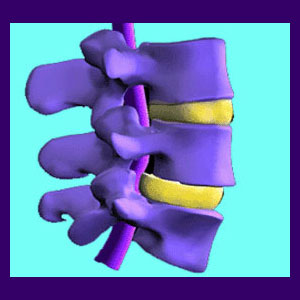
Myelitis is another name for spinal cord inflammation, although it is often used to describe cord damage which is not caused by trauma or violence. There are many other reasons for spinal cord damage to occur, such as spinal degeneration, disease and congenital conditions.
Myelopathy can affect the cervical spinal cord, the thoracic cord or the lumbar/sacral cord and nerve roots. The higher the condition exists in the spinal cord, the worse its consequences will typically be on the physical functionality of the patient.
This discussion explains the various forms and causes of spinal cord inflammation, as well as the prognosis for recovery.
What is Myelitis?
This condition is characterized by inflammation the spinal cord structures, which are responsible for carrying neurological signals to and from the brain. These structures, called myelinated fiber tracts, or white matter, are instrumental in proper spinal cord function. Additionally, sometimes, spinal gray matter is also affected; causing neuron-related concerns and associated nerve signal loss.
Spinal cord inflammation comes in a wide spectrum of severities and can create effects ranging from barely noticeable to complete and utter paralysis. Therefore, each cord inflammation must be evaluated by an expert to determine the need and parameters for treatment.
Causes of Spinal Cord Inflammation
Spinal cord inflammation can be the direct or indirect result of a great number of possible causations:
Extreme spinal stenosis can compress and damage the cord or cauda equina nerves.
Spinal cord injury from any violent trauma can create acute cord damage.
Anatomical ischemia due to arterial disease, embolism or aneurysm can cause the cord to suffer dysfunction and inflammation.
Spinal tumor formation (cancer or non-cancerous growths) can cause inflammation of the spinal cord.
Congenital condition, such as severe spina bifida, can cause cord dysfunction and injury.
A variety of disease processes can also attack the spinal cord and cause dreaded injury which may be permanent.
Obviously, treatment for any form of spinal cord damage should be handled by a specialist. Patients affected by inflammatory spinal cord issues must be very vigilant with their preventative healthcare requirements in order to remain healthy. Treatment for spinal cord damage is limited in many instances, since permanent neurological function is often lost once the spinal structures have been altered.
Myelitis Diagnosis
Achieving an accurate and complete diagnosis, along with a prognosis for the future, is especially vital for every person affected with a spinal cord injury. Understanding the exact nature of and reasons for the symptoms is the first and most logical step in finding potential resolution or at least preventing additional damage to the spinal cord.
Generally, the higher the level of spinal cord damage, the greater the effects on the patient will be. Cervical myelitic conditions will affect all functions from the neck down, while lumbar cord syndromes will only affect the lower body region.
For patients with complete spinal cord injury or high level and severe incomplete cord injuries, there are sure to be significant functional restrictions. However, with modern technology on your side, there is always hope for living a rewarding life while medical science continues its quest for curing cord related trauma.
Let’s all hope that stem cell research gets some much needed support and receives the green light for more widespread study and testing.





